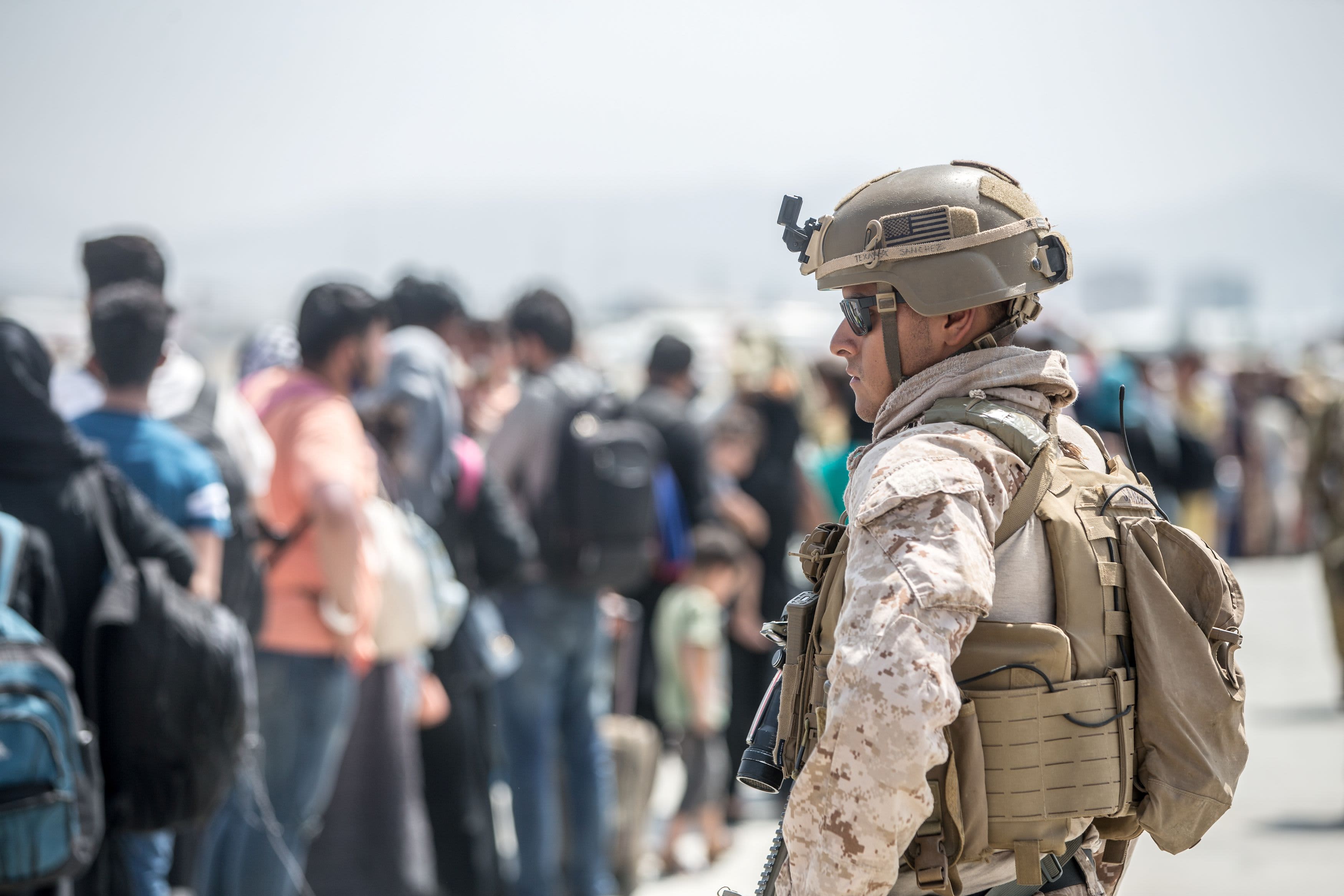WASHINGTON – The United States is a day away from ending its evacuation mission in Kabul, marking the apparent end of a 20-year Western attempt to create a stable democracy in Afghanistan.
As of early Monday, Western forces evacuated 1,200 people out of the Afghan capital on 26 military cargo aircraft flights in a 24-hour period, according to the latest figures from the White House. Since the mass evacuations began on Aug. 14, approximately 116,700 people have been airlifted out of Afghanistan.
About 122,300 people have been evacuated since the end of July, including about 5,500 U.S. citizens and their families.
On Monday, as many as five rockets were intercepted by U.S. missile defenses near Hamid Karzai International Airport in Kabul, the site where U.S. forces are sprinting to carry out final evacuation flights since the Taliban gained control of the country two weeks ago.
White House press secretary Jen Psaki said in a statement that President Joe Biden was briefed on the rocket attack and reconfirmed that commanders should prioritize the protection of U.S. forces on the ground.
The Pentagon said Saturday that it had begun its retrograde, or withdrawal, process of U.S. service members in Afghanistan. Pentagon spokesman John Kirby said that less than 5,000 service members remain in the country, adding that the U.S. would no longer provide an exact number due to security conditions.
A State Department spokesman said Saturday that approximately 250 Americans are still seeking evacuation.
Over the weekend, the U.S. conducted two known drone strikes against ISIS-K members believed to be involved in planning attacks against U.S. forces in Kabul. The strikes came on the heels of a suicide bombing attack that resulted in the deaths of 13 American service members.
The Pentagon said Sunday that it was assessing the results of the drone strikes, following reports of civilian casualties.
“We are aware of reports of civilian casualties following our strike on a vehicle in Kabul today,” U.S. Navy Capt. Bill Urban, spokesman for U.S. Central Command, said in a statement.
“We would be deeply saddened by any potential loss of innocent life,” he added.
On Sunday, the president and first lady Jill Biden traveled to Dover Air Force Base to meet privately with the families of the fallen U.S. service members before observing the movement when American flag-draped cases were transferred from a C-17 military cargo plane to a vehicle.
A dignified transfer is a solemn process in which the remains of fallen service members are carried from an aircraft to an awaiting vehicle. A dignified transfer is conducted for every U.S. service member killed in action.
It marked Biden’s first time attending a dignified transfer since becoming president.
Secretary of Defense Lloyd Austin and Chairman of the Joint Chiefs of Staff Mark Milley also attended the dignified transfer, along with U.S. Marine Corps Commandant Gen. David Berger, U.S. Army Chief of Staff Gen. James McConville, Chief of Naval Operations Adm. Michael Gilday and U.S. Air Force Col. Chip Hollinger, who oversaw the military logistics of the movement.
The Aug. 26 attack near the gates of Hamid Karzai International Airport, which killed 11 Marines, one Navy sailor and one Army soldier, is under investigation.
